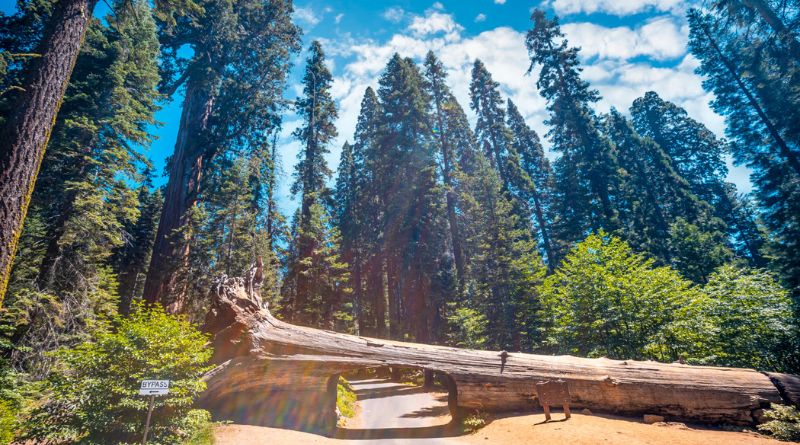The Top 10 Biggest State Parks in North Carolina
Biggest State Parks in North Carolina – Welcome to North Carolina, where expansive landscapes and rich biodiversity converge in the state’s largest parks. These natural sanctuaries provide a haven for outdoor enthusiasts, boasting diverse ecosystems that showcase the beauty of the region.
From majestic mountains to pristine coastal areas, North Carolina’s state parks offer a tapestry of environments waiting to be explored. As we delve into the top five largest state parks, you’ll uncover the unique features, recreational activities, and conservation efforts that make these natural wonders essential to the state’s identity.
Join us on a journey through the heart of North Carolina’s wilderness, where adventure and preservation intertwine in these sprawling havens for both nature lovers and those seeking an escape into the great outdoors.
Importance of State Parks

State parks play a crucial role in preserving natural ecosystems, fostering biodiversity, and providing recreational opportunities for communities. These protected areas serve as havens for native flora and fauna, contributing to conservation efforts and maintaining ecological balance.
State parks also offer citizens and visitors accessible spaces for outdoor activities such as hiking, camping, and wildlife observation, promoting physical health and well-being. Moreover, they serve as educational platforms, connecting people with nature and fostering environmental awareness.
State parks contribute to local economies by attracting tourists, creating jobs, and supporting nearby businesses. As vital components of a region’s identity, state parks enhance the quality of life for residents and contribute to the overall sustainability of the environment, making them essential for both recreational enjoyment and the long-term health of ecosystems.
Also, Read – Worst Places to Hang a Hummingbird Feeder
Biggest State Parks in North Carolina
South Mountains State Park

South Mountains State Park, situated in Burke County, North Carolina, is one of the state’s largest parks. Encompassing over 40,000 acres, it boasts diverse ecosystems, including waterfalls, streams, and dense forests. The park offers numerous recreational activities such as hiking, horseback riding, and fishing.
The Jacob Fork River winds through the park, providing picturesque landscapes and opportunities for outdoor enthusiasts. With a variety of trails catering to different skill levels, South Mountains State Park is a haven for nature lovers, offering a tranquil escape and a chance to explore the natural beauty of the region.
Pisgah National Forest
Pisgah National Forest, spanning across western North Carolina, is a vast recreational haven covering more than 500,000 acres. Renowned for its diverse landscapes, the forest encompasses waterfalls, dense forests, and the iconic Blue Ridge Mountains.
It offers a plethora of outdoor activities, including hiking, mountain biking, fishing, and camping. Home to the Pisgah Ranger District, the forest features popular destinations like Looking Glass Falls and Sliding Rock.
With an extensive network of trails, Pisgah National Forest provides opportunities for both seasoned adventurers and casual nature enthusiasts to immerse themselves in the beauty of this Appalachian treasure.
Uwharrie National Forest

Uwharrie National Forest, located in central North Carolina, sprawls across nearly 52,000 acres of diverse terrain. A haven for outdoor enthusiasts, it offers opportunities for hiking, horseback riding, off-road vehicle use, and camping.
The forest’s Uwharrie Mountains provide a scenic backdrop for activities such as gold panning in the Uwharrie River and exploring the Uwharrie National Recreation Trail. Rich in biodiversity, the forest is home to various plant and animal species.
Its Badin Lake Recreation Area is popular for water-based activities like fishing and boating. Uwharrie National Forest provides a tranquil escape, inviting visitors to discover the natural wonders nestled in the heart of North Carolina.
Also, Read – Best Chicken Breeds for Eggs
Hammocks Beach State Park
Hammocks Beach State Park, nestled near Swansboro, North Carolina, offers a coastal retreat across its mainland, barrier island, and smaller isles. Spanning 1,520 acres, the park features pristine maritime forests, salt marshes, and tidal creeks.
Accessible by ferry or private boat, Bear Island, the park’s barrier island, beckons with unspoiled beaches and extensive dunes. Hammocks Beach is a haven for birdwatching, paddling, and nature exploration.
The park’s mainland section provides trails and a visitor center, enriching the visitor experience with educational opportunities. As a coastal gem, Hammocks Beach State Park invites guests to immerse themselves in the beauty of North Carolina’s coastal ecosystems.
Lake Norman State Park
Lake Norman State Park, situated in Iredell County, North Carolina, is a recreational haven surrounding the largest man-made lake in the state. Encompassing over 1,900 acres, the park offers a range of outdoor activities, including boating, fishing, hiking, and picnicking.
The park’s diverse ecosystems provide a scenic backdrop for nature enthusiasts, and its trail system features routes for various skill levels. With a swimming area and designated fishing areas, Lake Norman State Park caters to water and land-based recreation alike.
Visitors can enjoy the serene beauty of the lake, making it a popular destination for both locals and tourists seeking a relaxing escape.
Eno River State Park
Eno River State Park, near Durham, North Carolina, spans over 4,000 acres of natural beauty along the Eno River. Known for its picturesque landscapes and diverse ecosystems, the park offers a network of hiking trails, providing opportunities for exploration and wildlife observation.
Popular trails include Cox Mountain Trail and the Eno River Rock Quarry Trail, leading to a historic quarry site. The river itself provides a serene backdrop for canoeing, fishing, and picnicking. With its proximity to urban areas, Eno River State Park serves as a peaceful retreat, inviting visitors to connect with nature through its scenic trails and the calming flow of the Eno River.
Mount Mitchell State Park

Mount Mitchell State Park, located in Yancey County, North Carolina, is home to the highest peak east of the Mississippi River, Mount Mitchell. Spanning over 1,900 acres, the park offers awe-inspiring panoramic views of the surrounding Appalachian Mountains. Visitors can reach the summit by hiking the challenging Mount Mitchell Trail or driving along the Blue Ridge Parkway.
The park provides opportunities for birdwatching, picnicking, and stargazing, with the peak’s elevation reaching 6,684 feet. A visitor center offers insights into the region’s ecology and history. Mount Mitchell State Park is a haven for nature enthusiasts seeking both adventure and the tranquility of North Carolina’s highest point.
Crowders Mountain State Park
Crowders Mountain State Park, near the Charlotte metropolitan area, is a popular destination spanning over 5,000 acres. Dominated by the towering peaks of Crowders Mountain and Kings Pinnacle, the park offers panoramic views of the surrounding landscape. Hikers can explore a network of trails, including the challenging Crowders Trail and the family-friendly Pinnacle Trail.
Rock climbers are drawn to the challenging cliffs of the mountain faces. The park provides diverse ecosystems, including rugged terrain and serene lakes. Crowders Mountain State Park is a haven for outdoor activities, attracting hikers, climbers, and nature enthusiasts seeking both adventure and the natural beauty of the Piedmont region.
Stone Mountain State Park
Stone Mountain State Park, situated in Wilkes and Alleghany counties, North Carolina, encompasses over 14,100 acres of natural beauty. The park is renowned for its iconic granite dome, waterfalls, and diverse habitats.
Hikers can explore a variety of trails, including the popular Stone Mountain Loop Trail, providing stunning views of the surrounding landscape. Rock climbers are drawn to the challenging granite face of Stone Mountain.
The park also features a historic farmstead and a picturesque meadow. With opportunities for camping, fishing, and wildlife observation, Stone Mountain State Park invites visitors to experience the tranquility and outdoor adventures within the scenic backdrop of the Blue Ridge Mountains.
Raven Rock State Park

Raven Rock State Park, nestled along the Cape Fear River near Lillington, North Carolina, spans over 4,800 acres of natural beauty. Known for its towering cliffs and unique geological formations, the park offers striking views of the river and surrounding woodlands.
Hikers can explore a network of trails, including the Raven Rock Loop Trail leading to the park’s namesake, a 150-foot cliff. The park provides opportunities for camping, fishing, and picnicking. With its diverse plant and animal life, Raven Rock State Park is a haven for nature enthusiasts seeking a tranquil escape and a chance to explore the geological wonders along the meandering Cape Fear River.
Conclusion
In conclusion, North Carolina’s largest state parks stand as testaments to the state’s commitment to preserving its natural heritage. From biodiversity conservation to providing recreational havens, these expansive landscapes weave a tapestry of ecological importance and human connection to nature.
As we appreciate their significance, let’s champion their ongoing preservation, ensuring that future generations can continue to find solace, adventure, and inspiration in these vital sanctuaries.
FAQs
The size of a state park is determined by its acreage. Larger parks often encompass diverse ecosystems, providing more extensive opportunities for recreation and conservation.
North Carolina is home to numerous state parks, each offering unique natural features and recreational activities. As of my last update in 2022, there are over 40 state parks in the state.
Recreational activities vary but commonly include hiking, camping, fishing, bird watching, and water sports. Each park offers a range of activities catering to different interests.




